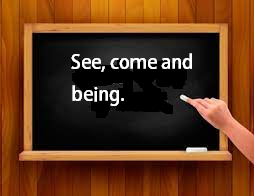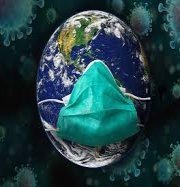
Posts Tagged ‘Ser’
No time to Being
Neither the pandemic, nor the Home Office, nor the intriguing series (personally I still prefer to go out and go to the movies) have made men calmer, more serene and happy, everything needs to be accelerated.
(personally I still prefer to go out and go to the movies) have made men calmer, more serene and happy, everything needs to be accelerated.
The “Aroma of Time: a philosophical essay on the Art of Delay” (2016) is nothing more than a counterpoint to this destructive stigma of our time that culminates in desires to exclude the Other, hatred and violence without borders, in short, an ever-increasing war. cruelest on a dark horizon, there is no time to be, just to have, to satisfy the simplest entertainment, not just games. The essay originally published in Germany in 2007, Byung-Chul updates what is not only an acceleration of time but also a temporal crisis based on a desynchrony not only of reality in a nobler and more poetic sense, whose discontinuity leads to something without direction, order and impossibility of a synthesis or conclusion that allows our lives to last in an “aroma”, as its “delay” should be understood.
He quotes and analyzes “Marcel Proust “In search of lost time” (Proust, 1913) what he calls a “temporal crystal” or his vision of aromatic time: “silent, sonorous, fragrant and clear hours” (in Han, 2016, p. 59 ).
There is a time of temporal anguish, it seems that the time spent slips through the fingers and is lost.
What is substantial and essential in our lives, essence and substance are the main forms of desynchrony in our being, they are referred either to an angelic delirium (false essence) or to a sculptural, decorative and unreal physical form (false substance).
As Byung-Chul deduces: “it presupposes that existence is historical, that each of us has a trajectory. The aroma is that of immanence” (Han, 2016, p. 59).
In philosophy and practice immanence is something that has an end in itself, as opposed to transcendence that something or an end outside and superior to itself.
Such is our lost “aroma” of time, to contemplate experiencing Being-in-time as having an end beyond, as Byung-Chul ends and concludes in his essay the necessary correction: “a large measure of strengthening the contemplative element” (Han, 2016, p. 186).
Han, Byung-Chul (2016). O aroma do tempo: um ensaio filosófico sobre a Arte da Demora. transl. Miguel Serras Pereira, Lisbon: Relógio d´Água.
Anguish and fear of existence
The constitutive feature of Dasein, in Heidegger, goes beyond the psychological and ontic phenomenon, not being something that refers only to a being or something given, it refers to the totality of being as a being-in-the-world, that is, its true dimension ontological, in it the anguish of Being is explained.
the psychological and ontic phenomenon, not being something that refers only to a being or something given, it refers to the totality of being as a being-in-the-world, that is, its true dimension ontological, in it the anguish of Being is explained.
The category emerged with Kierkegaard but for him anguish reveals our finite being, the nothingness of our existence in the face of God’s infinity, due to its eternal character, while Heidegger does not think only as an ontological category, making it just a phenomenon of finitude human.
Stuck with human finitude, Heidegger finds the difference between anguish and fear (furcht), but in the work Being and time, fear is also a fundamental existence through which man finds himself in the world (Heidegger, 1989) and this makes the anguish a mild stage.
Fear, on the other hand, constitutes a strong anima disposition for the author [Befindlichkeit] it is it that reminds us of something we fear and with this the whole of the world manifests, in its strangeness and amazement, it is what happens before we can perform an act knowledge of the world.
There is in it a force to reveal the world, even if at first it is just an escape, in it, for example, joy or happiness, explains the author are very transitory and less striking, this being-there is cast [geworfen] in the middle to states of mind, able to support the weight of existence, and in it “Humour makes manifest ‘how we feel’. In this ‘how we feel’, being willing brings the Being in its being-there” (HEIDEGGER, 1986, p. 134).
More precisely, or more in line with Heidegger’s thought, fear is a central disposition in our existence because it manifests the world in the actor of being-there from itself, even though man is the theme The aim of Heidegger and Kierkegaard, the ultimate address of both is fear not as an object outside himself, but rather itself: man only fears for something determined because he is ultimately affected and interested.
I digress because being “outside” to the contemporary world, Byung Chull Han and Hanna Arendt have taken up in a different way the “being inside” in the “contemplative vitta”, in Heidegger fear turns to the one who fears and not to the one who fears , in Kierkegaard the fear is God, but already in the period of idealism projected onto the world, not as a Being “outside”
What is important in Heidegger’s discourse is that it manages to establish three forms of fear: the one that [wofür] we fear something, that which threatens us (the difficulties of co-presence), the very fear [fürchten] as such, which opens up to us the world (Sloterdijk’s spheres help this reflection), and, and the reason [worum] we fear, which is our own being-there.
Finally, fear can have variations: it can be what’s frightening; it can be horror and also disappointment” (Heidegger, 1986, p.142), but the difference between fear and fear would help to better separate Heidegger’s category from Kierkegaard, that fear is of something “greater”.
HEIDEGGER, M. (1989) Ser e Tempo Traduçăo de Márcia de Sá Cavalcanti. Petrópolis: Vozes.
Dwelling and the clearing
Both dwelling and the clearing precede the idea of Being, since ancient philosophy, Being is also “home”, but modern philosophy has recovered language, an event called linguistic turnaround, and Heidegger’s phrase is worth: “Language is the house of being ”means an ontological identification between being and language.
since ancient philosophy, Being is also “home”, but modern philosophy has recovered language, an event called linguistic turnaround, and Heidegger’s phrase is worth: “Language is the house of being ”means an ontological identification between being and language.
What is this “home” means what is being while being, means removing from being its adjectives to be what is, for example, man as a man without his color, religion, sex, nationality, age, culture, nothing that particularizes it and separates them from each other, this is where we find being.
That is why Heidegger’s definition of language, but in a broad sense any form of communication from a simple look to a long speech, and even the use of some apparatus to enrich (or impoverish, of course) language.
To inhabit the clearing therefore requires first that we unveil what this Being is, and then the being that is what is worth to be, while the “being-there” (Dasein) is what is in the being.
This was veiled in history, and even more in modernity, which projected the whole being on the being, that is, under its characterization and determination, but what it is has been veiled.
Gorgias (485-380 BC) was the first in the history of philosophy to deny the existence of being, for this he also had to deny reason, and existence in absolute, “nothing exists absolutely”, so there is no truth, it is the principle that today we call relativism.
The existence and reality of Being, although veiled, is the possibility of a clearing, an opening for transformation will depend on it, for change both in the human relationship, since this is the fundamental language of being, as in the relationship with nature, which it also determines the being-there.
Everything can become unveiled if we remove the veil that covers being, and we also discover its interiority, which the philosopher Byung Chul Han calls negativity, which is his reflection under what he is, seeing himself as in a mirror, and so on. to be able to see oneself as Being.
Educação e Complexidade
Dizer de maneira simples o que ele defende, toda síntese é um reducionista, mas poder-se-ia pensar numa mudança de paradigma onde no ensino as pessoas serão “capazes de compreender e enfrentar os problemas fundamentais da humanidade, cada vez mais complexos e globais”, a pandemia com certeza é um claro problema deste tipo.
O modelo atual leva a “negligenciar a formação integral e não prepara os alunos para mais tarde enfrentaram o imprevisto e a mudança”, novamente um exemplo aplicável a pandemia não nos adaptamos ao novo normal, porém a raiz de todo problema para o filósofo-educador Morin é que “o conhecimento está desintegrado em fragmentos disjuntos no interior das disciplinas, que não estão interligadas entre si e entre as quais não existe diálogo”, daí a dificuldade de se promover diálogo entre “especialistas” cuja visão é fixa e há uma “hiperespecialização”.
Quando Edgar Morin começou a escrever seu método, já era claro para muitos educadores  que um novo modelo de educação deveria emergir, a Pandemia com uso de recursos online e também formas criativas de motivar e prender a atenção de alunos (na internet não se deve usar períodos longo, são cansativos e as pessoas saem) mostra bem isto.
que um novo modelo de educação deveria emergir, a Pandemia com uso de recursos online e também formas criativas de motivar e prender a atenção de alunos (na internet não se deve usar períodos longo, são cansativos e as pessoas saem) mostra bem isto.
O autor de “Cabeça bem-feita” e “Os sete saberes para a Educação do Futuro, Educar para a Era Planetária” lamenta, igualmente a “condição humana está totalmente ausente” no ensino: “Perguntas como o ´o que significa ser humano’ não são ensinadas”, de modo mais profundo e análogo Heidegger detectou uma ausência na filosofia da questão do Ser, claro que havia na filosofia antiga e no período medieval (a ontologia de Tomás de Aquino por exemplo), porém o Dasein de Heidegger, esse “ser-aí” ainda hoje, ligo e relido é mal compreendido.
Poderia ser perguntado o que é esse “ser” agora durante a Pandemia, algumas respostas são possíveis, mas inacabadas.

